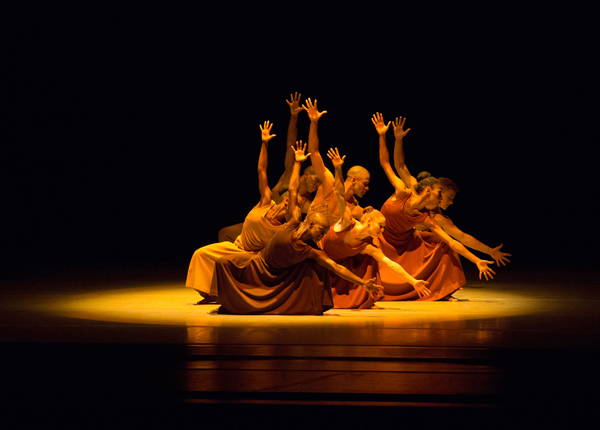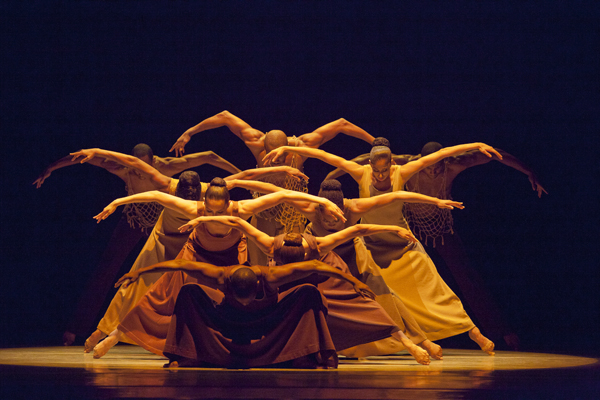AILEY DANCERS DELIVER
By: Hal de Becker
Las Vegans like a sure thing, which may be one of the reasons a performance by Alvin Ailey American Dance Theater nearly filled The Smith Center recently. The internationally acclaimed troupe was expected to be first rate but it exceeded all expectations.
With today’s jazz focus on pelvic and hip gyrations, the late Alvin Ailey’s application of back, rib cage, solar plexus and contraction techniques, learned from his teacher Lester Horton, are refreshing ‘tools’ that enhance his dances.
His influence on later choreographers, modern and classical, is particularly recognizable from his unique use of multiple arms and legs that create beautiful and dramatic lines that one never tires of gazing at.

‘Revelations’ is, perhaps, Ailey’s supreme masterwork. It is difficult to believe that a work he created in 1960 can be so rich in choreographic ideas that it continues to look fresh, new and innovative today more than half a century later.
Set to traditional spirituals, ‘Revelations’ utilized modern, classical and jazz styles in segments ranging from solos to ensembles. Its religious nuances were never dogmatic, and the bright, colorfully costumed dance was brimming over with gaiety.
Very different but just as compelling, was Robert Battle’s ‘No Longer Silent’. It evoked the suffering, especially mental and emotional, endured by prisoners in Nazi concentration camps.
Battle never resorted to excessive histrionics. It was his unique and gripping choreography combined with the controlled performance of ten males in stark black outfits that conveyed the prisoners’ psychological passage from despair to futile desperation and finally frenzied madness.

At one point, after an attempted escape, the stage was darkened and - with illumination only on faces, heads hanging limply to the side, one arm extended overhead resembling a rope - a gruesome gallows scene was evoked.
The powerful and evocative score from 1922 by Czech composer Erwin Shulhoff was sadly appropriate: the composer died in a Nazi concentration camp in 1942.
Ailey dedicated his female solo ‘Cry’ to “…all Black women everywhere - especially our mothers.” The dance is in three sections and there has been much speculation on how to interpret them.
The first sections might depict the peaceful contentment of an expectant mother preparing for her child. The second, her anguished awareness of the hostile surroundings the child will face. And the third, her determination to resist hostile forces and rejoice in a celebration of self-identity.

The challenging solo requires a dancer capable of encompassing a wide range of emotions with unwavering intensity. Linda Celeste Sims’ performance was credible.
All mediums of art, including dances like ‘Cry’, share the credit for raising at least some of American society to its recently elevated state of enlightenment on race, gender and orientation.
Ronald K. Brown’s ‘Open Door’ set to the spirited sounds of big band Latin Jazz was an enjoyable if lightweight opener for the program. The choreography was pleasant and rhythmic and while many of the repeated moves became repetitious some others were fun to see again - and again….
Lighting was excellent throughout the program. Particularly effective were Nicola Cernovitch’s for ‘Revelations’ and Nicole Pearce’s for ‘No Longer Silent’.
The thirty two Ailey dancers not only drew consistent and wildly enthusiastic ovations, but during the program’s curtain calls a brief encore from the finale brought the audience to its feet moving, dancing and clapping in time to the music in an exuberant, well deserved tribute to the artists and the production.